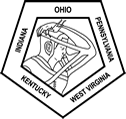<< Back to the abstract archive
Component separation technique for loss of domain at a pediatric hospital
James D. Vargo, B.S., Michael T. Larsen, M.D., M.P.H., Gregory D. Pearson, M.D.
Department of Plastic Surgery, The Ohio State University Wexner Medical Center
2014-03-16
Presenter: James D. Vargo
Affidavit:
The above work has not been previously presented or published in any scientific journal. 80% was completed by the presenter.
Director Name: Gregory Pearson
Author Category: Medical Student
Presentation Category: Clinical
Abstract Category: General Reconstruction
Background
Loss of domain of the abdominal wall is commonly repaired with the component separation technique (CST) when insufficient tissue exists to close the defect primarily. Although the utility of CST has been documented in cases of large ventral hernias in adults, its application to congenital and acquired defects in pediatric patients has been largely unreported. This study is a retrospective case series discussing the success of CST at a large pediatric hospital.
Methods
Seven patients with loss of domain repaired with CST at a pediatric hospital were identified as candidates. Patient records were reviewed for relevant history, cause of loss of domain, surgical repair using CST with or without tissue expansion (TE), synthetic mesh, biologic dermal matrices, post-operative complications, and length of follow up.
Results
Seven patients, four with omphalocele and three with acquired ventral hernia, were successfully treated with CST. Median patient age at the time of CST was seven years (range 3-19yrs) with mean defect diameter of 10.1cm (range 5-12cm). Four patients underwent tissue expansion prior to component separation. Recurrent ventral hernia required re-operation with CST in two cases. Mean follow up was 2.5 years (range 8 months-6 years).
Conclusions
Component separation technique is a safe, well tolerated, and effective means of abdominal wall reconstruction secondary to loss of domain in pediatric patients. This technique can be augmented with tissue expansion, mesh, or biologics to address lack of available soft tissue or other operative challenges.



